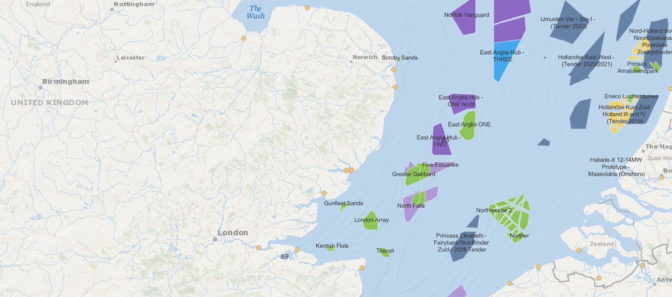HPC Software Gives Renewable Energy a Lift
[ad_1]
A hundred and forty turbines in the North Sea — and some GPUs in the cloud — pumped wind under the wings of David Standingford and Jamil Appa’s aspiration.
As colleagues at a British aerospace firm, they shared a eyesight of starting a company to implement their knowledge in large general performance computing across several industries.
They shaped Zenotech and coded what they discovered about computational fluid dynamics into a software called zCFD. They also constructed a instrument, EPIC, that simplified operating it and other HPC employment on the most up-to-date components in community clouds.
But receiving visibility outside of their Bristol, U.K. residence was a problem, provided the absence of huge, open up datasets to clearly show what their tools could do.
Harvesting a Wind Farm’s Information
Their trouble dovetailed with 1 in the wind power sector.
As federal government subsidies for wind farms declined, traders demanded a further assessment of a project’s likely return on expenditure, anything traditional tools did not supply. A U.K. government challenge teamed Zenotech with consulting firms in renewable vitality and SSE, a huge British utility keen to share facts on its North Sea wind farm, a person of the most significant in the entire world.

Working with zCFD, Zenotech simulated the most likely energy output of the farm’s 140 turbines. The application accounted for dozens of wind speeds and instructions. This bundled critical but formerly untracked phenomena in front of and behind a turbine, like the merged outcomes the turbines had on each and every other.
“These so-termed ‘wake’ and ‘blockage’ effects all-around a wind farm can even influence atmospheric currents,” reported Standingford, a director and co-founder of Zenotech.
The application can also track tiny but substantial terrain results on the wind, these types of as when trees in a close by forest get rid of their leaves.
SSE validated that the ultimate simulation came within 2 p.c of the utility’s measured info, offering zCFD a stellar reference.
Accelerated in the Cloud
Icing the cake, Zenotech showed cloud GPUs delivered benefits rapidly and cost correctly.
For case in point, the software ran 43x speedier on NVIDIA A100 Tensor Core GPUs than CPUs at a quarter of the CPUs’ charges, the company claimed in a recent GTC session (viewable on-desire). NVIDIA NCCL libraries that speed communications between GPU techniques even more boosted final results up to 15 p.c.

As a consequence, work that took more than 5 several hours on CPUs ran in fewer than 50 minutes on GPUs. The means to analyze nuanced wind consequences in element and finish a report in a day “got people’s consideration,” Standingford reported.
“The resources and computing ability to execute significant-fidelity simulations of wind initiatives are now reasonably priced and obtainable to the broader business,” he concluded in a report on the venture.
Lowering Carbon, Easing Local climate Improve
Wind energy is between the biggest, most price tag-successful contributors to decreasing carbon emissions, notes Farah Hariri, complex guide for the workforce encouraging NVIDIA’s prospects take care of their transitions to web-zero emissions.
“By modeling equally wake interactions and the blockage results, zCFD allows wind farms extract the optimum energy for the bare minimum set up fees,” she reported.
This form of rapid still detailed assessment lowers chance for traders, generating wind farms far more economically eye-catching than standard power sources, reported Richard Whiting, a partner at Everose, a person of the consultants who worked on the undertaking with Zenotech.
Looking forward, Whiting estimates extra than 2,100 gigawatts of wind farms could be in operation globally by 2030, up 3x from in 2020. It’s a escalating option on lots of amounts.
“In future, we anticipate tasks will use larger arrays of much larger turbines so the modeling problem will only get greater,” he additional.
A lot less Local climate Transform, Additional Organization
Aiding renewable initiatives get off the floor also set wind in Zenotech’s sails.
Given that the SSE investigation, the enterprise has assisted style wind farms or turbines in at the very least 10 other initiatives across Europe and Asia. And 50 percent of Zenotech’s enterprise is now outside the house the U.K.
As the organization expands, it’s also revisiting its roots in aerospace, lifting the potential clients of new kinds of corporations for drones and air taxis.
A Parallel Opportunity
For example, Cardiff Airport is sponsoring live trials where emerging businesses use zCFD on cloud GPUs to predict wind shifts in urban environments so they can map protected, efficient routes.
“It’s a forward-imagining way to use today’s managed airspace to approach future companies like air taxis and automatic airport inspections,” claimed Standingford.
“We’re observing a ton of innovation in tiny aircraft platforms, and we’re functioning with top platform makers and critical sites in the U.K.”
It is just one additional way the organization is holding its finger to the wind.
[ad_2]
Source backlink








